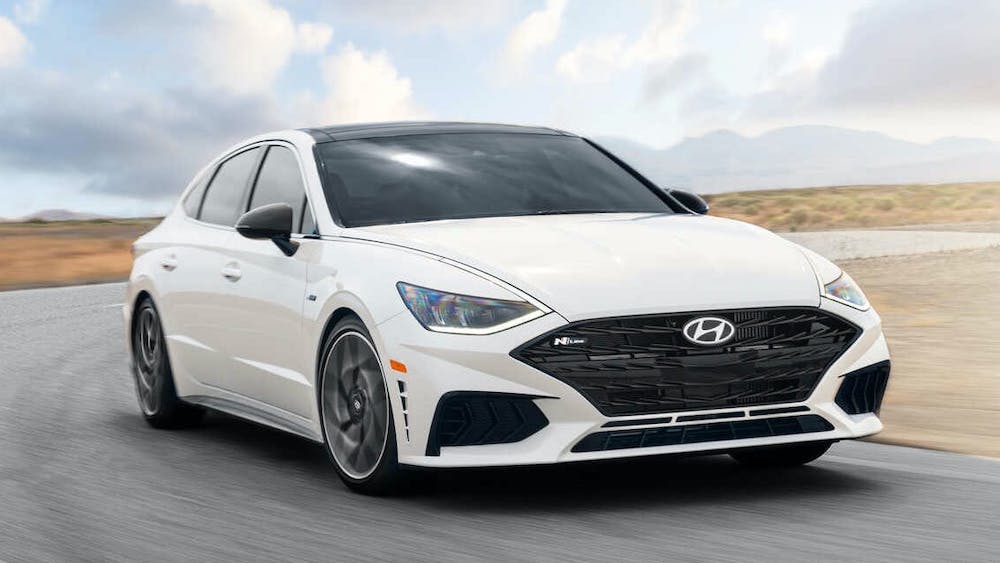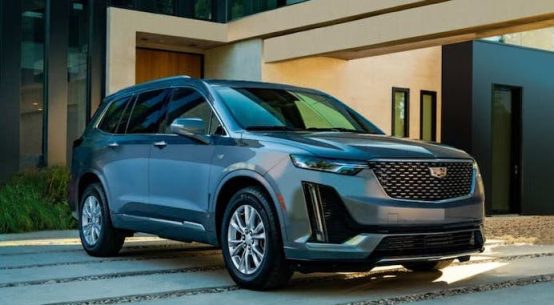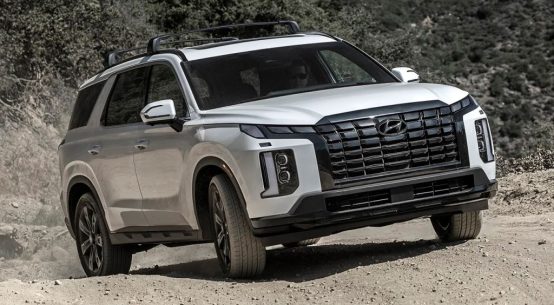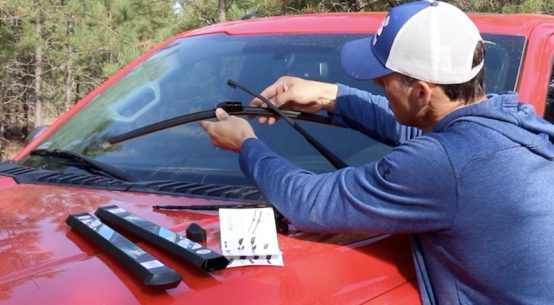
Hyundai has spent years building its brand to compete against the most popular nameplates, and the latest-generation Hyundai Sonata is the best example of those efforts. The midsize family sedan’s low starting price and class-leading warranty bolster its outstanding value, while upscale styling, agile handling, and a spacious interior make it a compelling everyday driver. Advanced safety aids come standard, as do Apple CarPlay and Android Auto.
Pros & Cons
- Good gas mileage
- Many available safety and tech features
- Upscale interior with spacious seats
- User-friendly tech features
- Impressive cargo capacity
- Good predicted reliability rating and long warranty
Cons
- Stiff suspension results in a firm ride
- Less athletic than rivals
- So-so engine power
- Hybrid’s fuel economy lags competitors
What’s New: Sonata is mostly unchanged after 2020 redesign; Sonata N Line debuts, with more power; The SEL Plus receives standard 19-inch wheels; Limited trim gets a six-way power passenger seat
The four-door, front-wheel-drive Sonata sedan comes in six trim levels: SE, Blue, SEL, SEL Plus, N Line, and Limited. The base SE trim starts at around $24,000. It comes with exterior details like 16-inch alloy wheels, automatic LED headlights, and power side mirrors. Safety features include forward-collision warning, automatic emergency braking, lane-departure warning, rear cross-traffic alert, and a backup camera. There is cloth upholstery in the cabin, a one-touch auto driver’s window, a 60/40 split-folding rear seat, keyless entry, air conditioning, full-speed adaptive cruise control, a six-speaker audio system, Bluetooth, an eight-inch touchscreen, a USB input, Apple CarPlay, and Android Auto.
For about $28,000, the Hybrid Blue adds an electric motor and lithium-ion polymer battery pack, which work together to improve fuel efficiency significantly. Also standard is blind-spot monitoring, push-button ignition, dual-zone climate control, and satellite radio. The SEL starts around $26,000 and gets heated front seats and a power driver’s seat. The Hybrid SEL costs about $30,000 and adds a power front-passenger seat, a leather-wrapped steering wheel, a 12-speaker Bose premium audio system, and wireless smartphone charging.
SEL Plus has an MSRP of roughly $28,500. It builds off the non-hybrid SEL, adding a turbocharged 180-horsepower engine, 19-inch wheels, a remote engine starter, a universal garage door opener, and a leather-wrapped steering wheel. New for the 2021 model year, the Sonata N Line has an estimated starting price of $33,500. It has a 290-horsepower engine, a sport-tuned suspension, aluminum pedals, more aggressive body styling, quad exhaust tips, a 10.25-inch touchscreen, a 12.3-inch digital instrument cluster, front and rear USB ports, Bose audio, navigation, a panoramic sunroof, and bolstered leather sport seats.
The Limited trim is the most upscale Sonata. Its $34,000 price tag includes a surround-view camera system, a blind-spot camera, a head-up digital display, leatherette upholstery, a power passenger seat, heated/cooled front seats, driver’s seat memory, leatherette and wood interior trim, a heated steering wheel, interior ambient lighting, and wireless smartphone charging. It also comes with Highway Drive Assist, providing the Sonata with semi-autonomous driving capabilities. The Hybrid Limited costs about $35,500. Options have always been notably few on Hyundais. Still, mid-level trims offer a tech package that adds the Limited’s infotainment features, and the Limited offers an auto-dimming rearview mirror.
There are four engines available on the Sonata, giving buyers a say in a vital element of the driving experience. SE and SEL trims come with a 191-horsepower four-cylinder engine that offers excellent power and an EPA-estimated 32 mpg in mixed driving. Non-hybrid Sonatas employ an eight-speed automatic transmission that shifts smoothly. Front-wheel-drive is standard on all trims; some rivals offer all-wheel-drive for better grip in lousy weather conditions.
The SEL Plus and Limited use a turbocharged four-cylinder that interestingly makes less horsepower — just 180 — but torque rises from 181 pound-feet of torque to 195. The turbocharger makes the Sonata feel somewhat sportier to drive. However, it doesn’t improve gas mileage or acceleration significantly, meaning shoppers will likely choose one of these trims for the added amenities and technology, and not because of the powertrain.
The new-for-2021 N Line trim gets an exclusive 290-horsepower turbo four-cylinder that generates 311 pound-feet of torque. With its sport-tuned suspension and bolstered seats, the N Line transforms the everyday Sonata into a true sport sedan. Acceleration is rapid, and the Sonata N Line handles well in turns. EPA estimates have not yet been released.
The Sonata’s available hybrid powertrain is one of the most fuel-efficient in its category. A four-cylinder gas engine connects to an electric motor powered by a battery pack in the car’s rear. This system comes together to make 192 horsepower and 139 pound-feet of torque. The most efficient Blue trim returns a staggering 52 mpg combined. Unfortunately, the six-speed automatic transmission that comes with the hybrid powertrain is not as smooth as the gas engine’s eight-speed.
The Hyundai Sonata is one of the most competitive family sedans available. One of the most stylish and feature-packed cars in its class, the Sonata’s 10-year/100,000-mile drivetrain warranty, and affordable starting price make it hard to pass up. Overall, shoppers will be hard-pressed to find a more stylish and feature-filled midsize car for the money.





